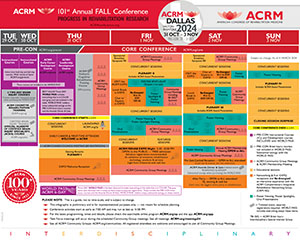Stroke
Brain Injury
Health Services Research
Spasticity
Technology
High Repetition Activity in Stroke Rehabilitation
Saturday, November 2, 2024
2:15 PM - 2:30 PM
Location: Station 7: ROOM: POSTERLAND / Trinity Poster / Exhibit Hall REGION: Tower Lobby Level >>>
- JS
Jyotsna R. Supnekar, OTR/L, OTD, CHT, COMT, CLT, C/NDT
Clinical Specialist
Johns Hopkins Hospital
Nottingham, Maryland, United States
Presenting Author(s)
Research Objectives: To investigate the effect of a high-repetition active motion home program in stroke rehabilitation.
Design: IRB approved case series with ten stroke survivor participants, at least 3 months post- stroke. The in-clinic visits included pre and post intervention tests, training of device use and a 2-week Home-Based Intervention.
Setting: Outpatient Therapy Services clinic for testing and training, and home setting for intervention.
Participants: All participants provided written informed consent per the institutional review board (IRB). Inclusion and exclusion criteria was used for selection of ten observational stroke survivor participants, at least 3 months post- stroke. Referral was from Johns Hopkins physicians and outpatient therapy clinicians.
Interventions: Pre- and post-intervention arm function was measured in- clinic using the Action Research Arm Test (ARAT), and spasticity using the Modified Ashworth Scale (MAS). Participants completed a pre-and post-intervention survey on ease-of-use of the device. Participant were trained in the use of the device and given a structured home based 6 x week program including a recommended 600 reps. per day of active arm motion using the device, self-stretches and functional use of the affected arm.
Main Outcome Measures: Arm function test using Action Research Arm Test (ARAT), Spasticity using Modified Ashworth Scale (MAS), a pre-and post-intervention ease of device use survey, three post-intervention open-ended questions about challenges in use of the device, adherence to the prescribed program, and, motivation to use the affected arm in daily activities.
Results: The average number of repetitions achieved by each participant per day was 899.5±423. The ARAT score for arm function increased by (mean±SD) 7.1±3.9 and the MAS score for spasticity reduced by 1.0±0.6. Subjectively, there was increased reported actual ease-of-use of the device post-intervention compared to that anticipated pre-intervention, 90% of the participants reported little difficulty completing the program despite stroke- and device-related challenges, and expressed increased motivation to use the arm.
Conclusions: A structured home program using high-repetition gaming devices may mitigate barriers to motivation, adherence, accessibility, and participation for stroke survivors. This study demonstrates the effect of a high repetition active motion program at home in moderately impaired stroke survivors with measurable clinically important differences in arm function and spasticity scores in a short time frame. Key ingredients include a gaming device designed for moderately impaired stroke survivors, detailed instructions on using the device, stretching, and arm use for daily activities provided by an occupational therapist.
Author(s) Disclosures: There was no conflict of interest to disclose during this study.
Design: IRB approved case series with ten stroke survivor participants, at least 3 months post- stroke. The in-clinic visits included pre and post intervention tests, training of device use and a 2-week Home-Based Intervention.
Setting: Outpatient Therapy Services clinic for testing and training, and home setting for intervention.
Participants: All participants provided written informed consent per the institutional review board (IRB). Inclusion and exclusion criteria was used for selection of ten observational stroke survivor participants, at least 3 months post- stroke. Referral was from Johns Hopkins physicians and outpatient therapy clinicians.
Interventions: Pre- and post-intervention arm function was measured in- clinic using the Action Research Arm Test (ARAT), and spasticity using the Modified Ashworth Scale (MAS). Participants completed a pre-and post-intervention survey on ease-of-use of the device. Participant were trained in the use of the device and given a structured home based 6 x week program including a recommended 600 reps. per day of active arm motion using the device, self-stretches and functional use of the affected arm.
Main Outcome Measures: Arm function test using Action Research Arm Test (ARAT), Spasticity using Modified Ashworth Scale (MAS), a pre-and post-intervention ease of device use survey, three post-intervention open-ended questions about challenges in use of the device, adherence to the prescribed program, and, motivation to use the affected arm in daily activities.
Results: The average number of repetitions achieved by each participant per day was 899.5±423. The ARAT score for arm function increased by (mean±SD) 7.1±3.9 and the MAS score for spasticity reduced by 1.0±0.6. Subjectively, there was increased reported actual ease-of-use of the device post-intervention compared to that anticipated pre-intervention, 90% of the participants reported little difficulty completing the program despite stroke- and device-related challenges, and expressed increased motivation to use the arm.
Conclusions: A structured home program using high-repetition gaming devices may mitigate barriers to motivation, adherence, accessibility, and participation for stroke survivors. This study demonstrates the effect of a high repetition active motion program at home in moderately impaired stroke survivors with measurable clinically important differences in arm function and spasticity scores in a short time frame. Key ingredients include a gaming device designed for moderately impaired stroke survivors, detailed instructions on using the device, stretching, and arm use for daily activities provided by an occupational therapist.
Author(s) Disclosures: There was no conflict of interest to disclose during this study.

.jpg)
.jpg)
.jpg)
